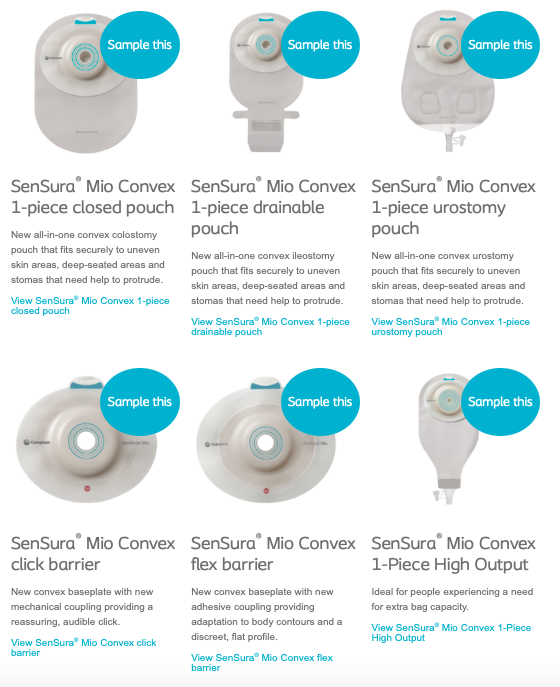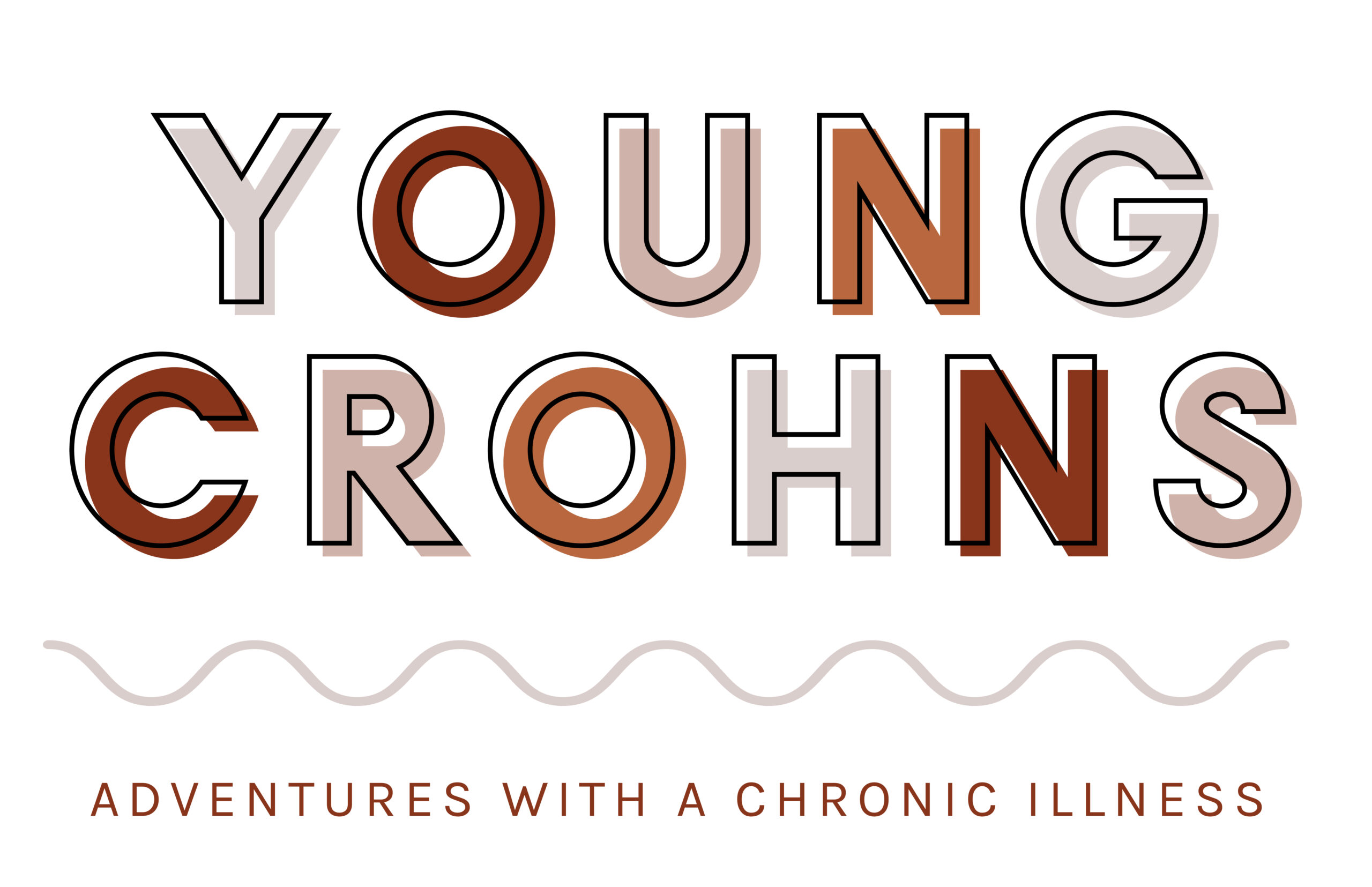
What is Convexity?
Disclaimer: This information is based on my own research into this particular aspect of stoma care as well as some personal experience and should not be used as medical advice or a diagnostic tool. The suggestions given within are taken from sources laid out in the references header. If you seek advice regarding the things you experience within your own disease, please contact your SCN for medical advice.
How does it work?

One of the guiding principles of ostomy care is to establish and maintain a secure and predictable seal.
Products that incorporate convexity are often considered an important tool for achieving this goal. Convexity is defined as ‘A curvature on the skin side of the barrier or accessory.‘ Convex products are frequently cited as the preferred means to manage flat or retracted stomas and to compensate for irregular peristomal planes such as creases or folds. Although a variety of convex products are available with different depths and shapes, there is little supporting evidence to guide their selection and use.
Although the terms “convex” and “convexity” are consistently used to describe the curvature on the adhesive side of the skin barrier or accessory, other descriptors remain undefined. There are no industry standards for the depth, profile, tension, firmness, softness, and flexibility of products with a convex feature. Research and clinical practice guidelines for product selection are lacking, which leaves the determination of matching stomal protrusion and peristomal contours to appropriate barriers to the individual knowledge and skill of the clinicians.
Why are they important?
Convex products may:
- Stop urine or stool leakage.
- Make you feel more comfortable and secure.
- Prevent or stop skin irritation.
- Improve wear time of pouching system.
When should a convex product be used?
“Characteristics of Convexity” – The outward curving of a skin barrier designed to apply some form of direct pressure to the immediate peristomal skin, promoting a good seal between ostomy pouching system and skin. The degree of obtained pressure depends not only on the depth, rigidity and gradient of the convex skin barrier but on the shape and the rigidity of the abdominal wall.
Hollister – Making Sense of Convexity
Put in laments terms; there are flat pouching systems and there are convex pouching systems. A flat pouching system lies flat on the skin around a stoma. A convex pouching system is different because a skin barrier, baseplate, or ring curves outward against the skin. This outward curve presses down on the skin. The pressing down on the skin, causes a person’s stoma to stick out more, giving a better empty into the pouching system.
Indications for a Convex product:
- Flush stomas experiencing leakage with fluid or firm output
- Retracted stomas or stomas at skin level
- The majority of loop ileostomies
- Telescoping stomas
- Wrinkles, scars or creases near the stoma
- Flaccid abdomens – loose or sagging skin around the hips or abdomen.
Types of Convex products



What else should you know about convex products?
- A convex pouching system should be fitted by a Specalist Stoma Nurse.
- A follow-up visit may be needed to make sure the convex pouching system is working for you.
- Convex products may leave a mark on your skin.
- Some nurses recommend an ostomy belt to enhance the effect of the convexity.
- If you use a belt, it should be snug but not too tight.
- Some convex products may be less flexible and less comfortable than non convex products.
- Depending on the appearance of your stoma and abdomen; a convex pouching system with a shallow, medium, or deep outward may be needed.
- A convex pouching system is not the solution for all leakage problems. It is important to see a nurse so they can recommend a pouching system that is right for you.
- Selecting the right convex product may require regular reassessment of products used, condition of the peristomal skin and the pouching system wear time.
- The following peristomal conditions do not preclude the use of convex products, however, caution and frequent reassessment is recommended in patients with: Pyoderma Gangrenosum, Crohn’s ulcers, caput medusa (peristomal varices), a parastomal hernia or a pressure injury.
My Experience with Convexity
I lasted five days into my ostomy journey before I experiences leaks. The leaks were due to the stitches around my stoma – which held the intestine to my abdominal skin surface – pulled in while healing and created a dip on my right hand side. Since then, I’ve needed a convex bag. On top of this, once my stoma has healed from the ordeal that is bowel surgery and she settled down, they had created a long, telescoping stoma – meaning that the peristalsis of my own bowel makes my stoma wiggle and move very much – which means I have periods of time when she is wide at the base before going flascid and pulling into herself. In those flascid moments, a flat bag would perfect but that is not the majority of my stoma life – so convex it is.

I’ve tried flat again just to make sure, and definately can not go without convexity. Depending on my weight, the strength of the convexity needed changes. Currently I use the Coloplast Light – which is the second of three levels of convexity that they offer. Previous to that I was using deep intergral convexity to help support me after Proctectomy surgery.
Do you have any questions or queries? Or just want to share your own experiences?
You can leave me a reply here or leave comments via my social media accounts – on Twitter, find my blog page on Facebook and over on Instagram

If you enjoyed this post check out The Importance of a AUR – Applicance User Review , Ostomy Supporting Products – Information and Open Letter: Stoma Bag Change
Further Reading:
- Journal of Wound, Ostomy and Continence Nursing – Use of Convexity in Ostomy Care – January 2017
- Wound Management and Prevention – The Ostomy Files: The Convexity Controversy – January 2003
- Dansac – Dansac Comprehensive Assessment Guide for Patient, Stoma, Skin, Convex –
- Hollister – Making Sense of Convexity – Hollister Inc, Victoria Australia 2006
- Hollister – Ostomy Care Tips: Using Convexity – Hollister Inc, Illinois USA 2017
- Coloplast – Coloplast For Security: Stoma Assessment Guide – Coloplast UK, 2018




1 Comments
Ostomy Glossary •
28/02/2021 at 15:00
[…] NB: It is VERY important to note here that convex bags should only be prescribed by a stoma care nurse (SCN) as they need to access usability. You can read more about this topic here. […]